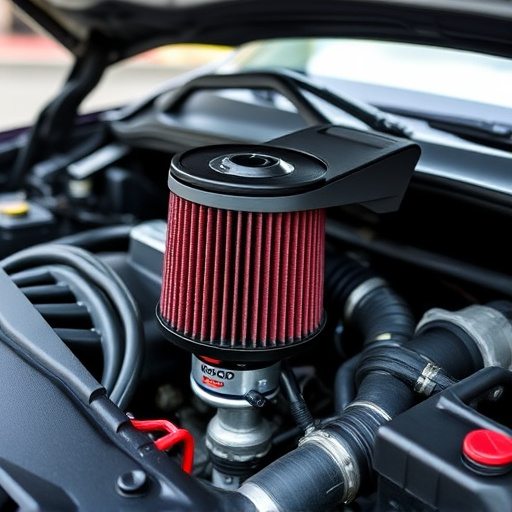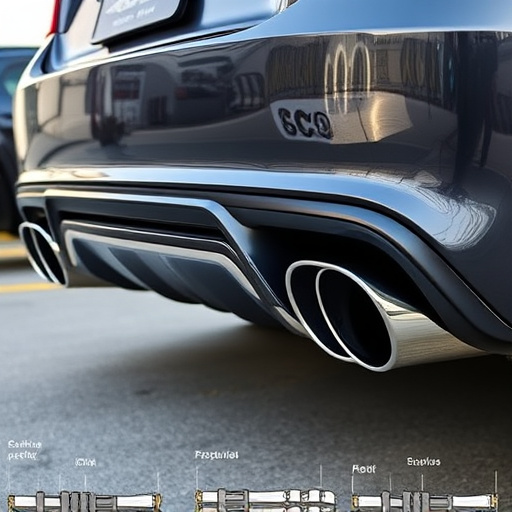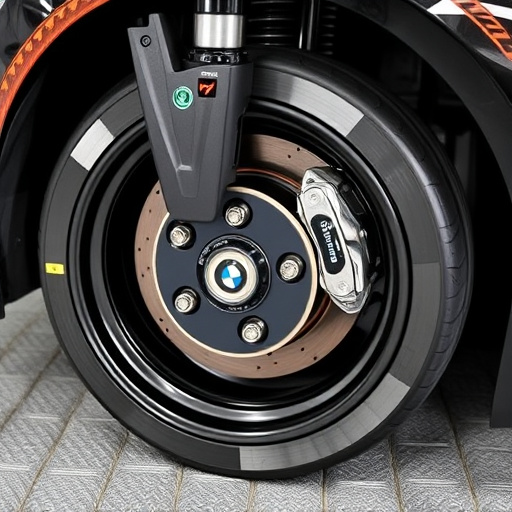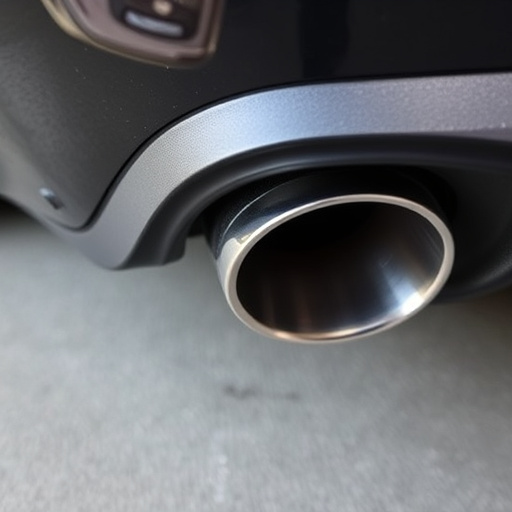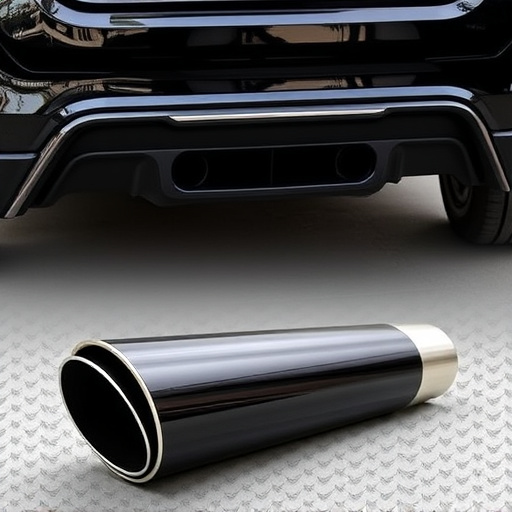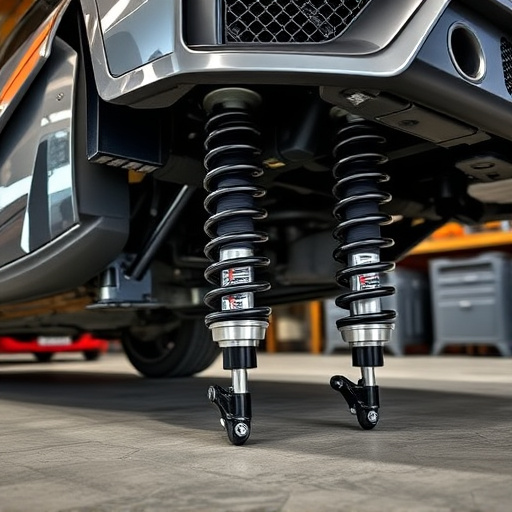The vehicle suspension system connects wheels to the chassis, absorbs road impacts, and influences tire wear patterns. Regular maintenance, including wheel alignment and control arm checks, prevents uneven tire wear. Upgrades like coilover kits enhance performance and tire longevity. Balancing suspension with high-performance parts and proper brake maintenance ensures even braking force distribution for optimal tire health.
The vehicle suspension system plays a crucial role in tire wear and road handling. This intricate network of components ensures a smooth ride and stable cornering. However, its design directly influences the distribution of forces on tires, leading to varying wear patterns. Uneven tire wear not only affects performance but also safety. This article delves into the fundamental aspects of vehicle suspension systems, explores how they contribute to tire wear, and provides strategies to minimize this issue for optimal vehicle health.
- Understanding Vehicle Suspension System Basics
- Impact of Suspension on Tire Wear Patterns
- Strategies to Minimize Uneven Tire Wear
Understanding Vehicle Suspension System Basics
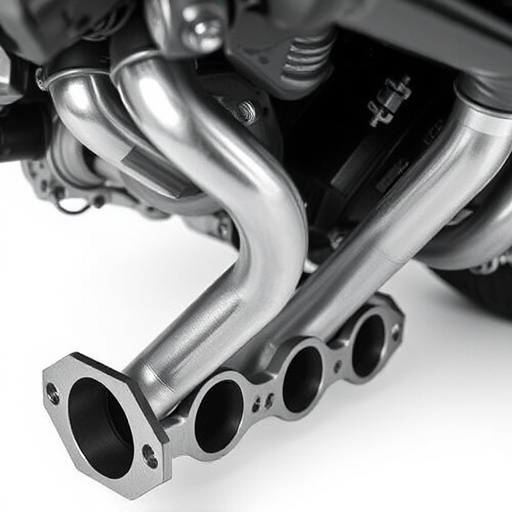
The vehicle suspension system is a complex network of components designed to connect your car’s wheels to its chassis, enabling smooth and controlled movement. It consists of several parts, including springs, shocks, struts, control arms, and sway bars, each playing a vital role in ensuring a comfortable ride and optimal vehicle handling. This system absorbs impacts from the road surface, preventing excessive forces from reaching the tires and other critical components.
Properly functioning suspension systems are crucial for maintaining tire wear. For instance, adjustable or high-performance suspension parts can be tuned to enhance performance, allowing better alignment and contact with the road. This is particularly beneficial for drivers seeking improved cornering abilities or those who frequently drive on rough terrain. Even upgrading simple components like air intake systems or brake rotors can indirectly impact tire health by reducing overall vehicle stress.
Impact of Suspension on Tire Wear Patterns
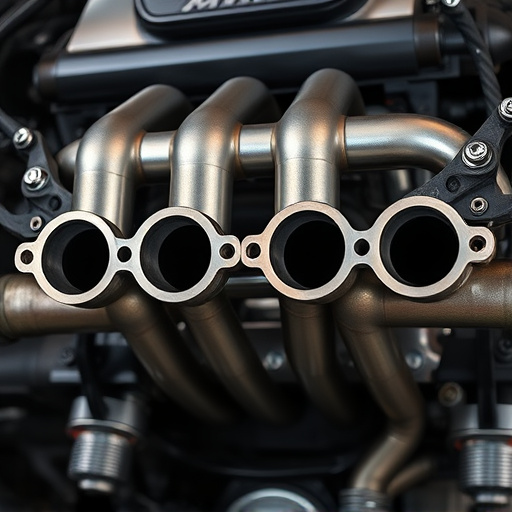
The vehicle suspension system plays a pivotal role in determining the wear patterns on your tires. A well-maintained and optimized suspension ensures even tire wear, prolonging their life and maintaining optimal vehicle handling. However, issues with suspension components can lead to uneven distribution of weight and pressure on the tires, resulting in accelerated wear on specific areas. For instance, worn or misaligned suspension parts might cause one side of a tire to experience more friction than the other, leading to cupping or uneven scraping.
High-performance vehicles equipped with sports suspensions designed for enhanced vehicle performance often exhibit unique tire wear patterns due to their specialized setup. While these systems prioritize handling dynamics, they can contribute to more rapid degradation of tires, especially if driving styles include aggressive cornering or heavy braking. Conversely, a well-tuned suspension system that balances performance exhaust and high-performance parts can achieve the best of both worlds: optimal vehicle performance and extended tire lifespan.
Strategies to Minimize Uneven Tire Wear
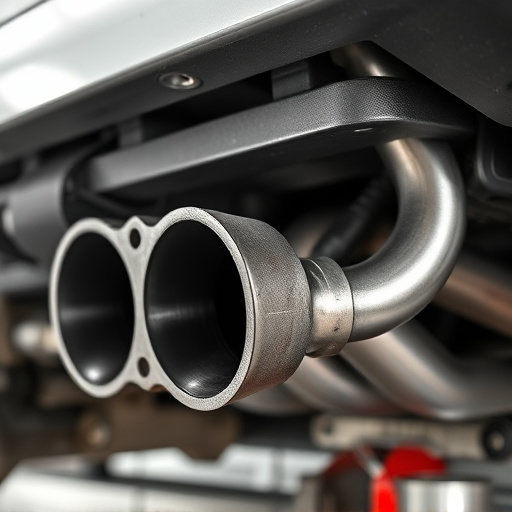
Uneven tire wear can be mitigated by regularly inspecting and maintaining your vehicle’s suspension system. Proper alignment of wheels and axles is key; misalignment can cause uneven pressure on tires, leading to rapid wear on specific spots. Regular suspension checks ensure that parts like control arms, ball joints, and bushings are in good condition, promoting even tire contact with the road surface.
Upgrading your vehicle’s suspension with components such as coilover kits can significantly enhance both vehicle performance and tire longevity. These kits offer adjustable ride height and damping control, allowing you to fine-tune your vehicle’s handling and reduce body roll during cornering. Additionally, ensuring optimal brake rotor condition is vital; well-maintained brakes contribute to even braking force distribution, which in turn prevents uneven wear on tires due to unequal load transfer.
The vehicle suspension system plays a pivotal role in determining tire wear patterns. By understanding how different suspension components interact with the road, drivers can employ strategies to minimize uneven wear, prolonging tire life and enhancing overall vehicle performance. Regular maintenance and adjustments to the suspension system are key to ensuring optimal tire health, ultimately saving costs and improving safety on the road.




